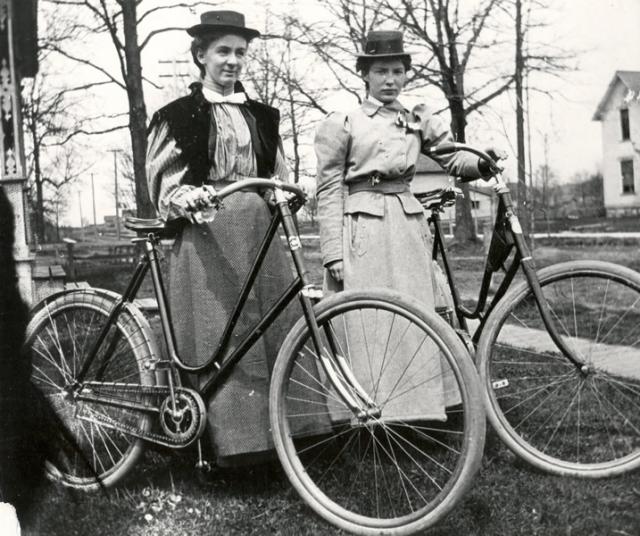In the 1890s, bicycles became safer and more comfortable to ride (detailed in this Wikipedia entry on the history of the bicycle). This may have something to do with the increased number of women who were attracted to bicycle riding. (There’s a correlation, but the causation is undoubtedly much more complex.)
Some celebrated this development. Susan B. Anthony, for example:
Let me tell you what I think of bicycling. I think it has done more to emancipate women than anything else in the world. It gives women a feeling of freedom and self-reliance. I stand and rejoice every time I see a woman ride by on a wheel … the picture of free, untrammeled womanhood.
Others were considerably less enthusiastic. The medical profession disapproved. Here’s an excerpt from an 1896 JAMA editorial (emphasis added):
A costume and posture which make ninety women in a hundred absurd spectacles, will not long be popular with the thousands and tens of thousands of the fair sex as to-day…. It is enough for us to declare that a woman, especially an adolescent girl, can not be suspended on the summit of a wedge without injury to the structures above, and deformation of the pelvis; and that the bruising of the flesh, which some riders unwillingly admit, and the craving for stimulants after a fatiguing ride, ought to restrain the prevailing indiscriminate and intemperate use of the vehicle. If exercise be the object, we commend a pair of sturdy human legs as a motor of unsurpassed fitness for every sanitary purpose. Assuredly, the pedestrian’s features will not wear that intently anxious expression, which has already been given the designation of the “bicycle face.”
Hmmm. Modern biomedicine was admittedly in its infancy at the time, but basic anatomy certainly was not. This is what women were up against in the not so distant past. It’s worth remembering.
Related posts:
Why bike when you can trikke?
How much exercise do we really need?
The tipping point for motor car casualties
The physical exam and society’s regard for physicians: A history
Medicalization then and now
The tyranny of health then and now
Are women doctors safer?
Image source: Old Spokes Home
Resources:
History of the bicycle, Wikipedia
Bicycling—Pro and Con, JAMA, Vol 312, No 1, July 2, 2014, p 99 (reprinted from JAMA August 15, 1896; Vol 27, No 7, pp 384-386)
Women’s Rights Movement of the Late 19th Century, Cornwall Historical Society
Sarah Goodyear, How women rode the bicycle into the future, Grist, March 25, 2011



Sorry, comments are closed for this post.